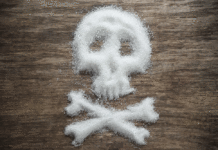According to a study published by the American Academy of Pediatrics earlier this year, teenagers who engage in regular athletic activities are less likely to abuse prescribed opioids or use heroin when compared to teenagers who did not regularly engage in athletic activity.
Monitoring the future
The conclusion is derived from the analysis of data collected by the Monitoring the Future (MTF) survey. The MTF survey, which is funded by the National Institute on Drug Abuse and conducted by the University of Michigan, is an annual survey of adolescent attitudes regarding substance abuse. It is a self-reporting study that is conducted through questionnaires in classrooms.
The new study, which examines MTF results collected between 1997 and 2014, examined data from 191,682 students. About half of the data collected was from eighth graders, while the other half came from 10th grade students.
Pediatrics study
The study found that trends in nonmedical prescription opioid use (NPOU) and heroin use in adolescent athletes has declined over the period examined. Furthermore, the study utilized logistical regression analysis — a statistical method for analysis of a dataset with multiple discriminating variables — to determine that adolescent athletes have lowered odds of reporting NPOU or heroin use when compared to their non-athletic counterparts.
Nonmedical prescription opioid abuse
Previous research has suggested that athletes in general are at a greater risk of NPOU.
This is due in part to an athlete’s higher propensity for serious injury, which can lead to an increased likelihood that they will be issued a prescription for opioids. In addition, athletes also faced an increased likelihood of receiving their teammate’s excess pills, which then may be used for either self-medication of injuries or recreational abuse.
However, while athletes in general may face a higher risk of NPOU, adolescents who engage in regular athletic activity are less likely to report NPOU or heroin abuse than non-athletic teenagers, despite the fact that opioid abuse rates continue to rise in the United States.
Heroin abuse
The study also sought to determine whether or not adolescent athleticism and subsequent NPOU could be associated with heroin abuse. Specifically, the study examined the anecdotal narrative that NPOU might lead to heroin use. However, due to the limitations of the data gathered by the FTC, the chronological relationship between teenage athleticism, NPOU, and heroin use could not be determined. There has yet to be a large-scale study to analyze the validity of the anecdotal narrative, which connects NPOU in adolescent athletes with heroin use.
Further research
The study included several recommendations for future studies, including consideration of the type of sports played (since sports with a high risk of serious injury might increase the propensity for NPOU), as well as an examination of the likelihood of transitioning from NPOU to heroin use due to the higher risk of injury. In addition, the study recommended that future large-scale surveys should consider adding more questions regarding the relationship between sports injuries and substance abuse, given that more than 75 percent of adolescents take part in athletic activity.
However, while the study did find that adolescent athletes were not more likely to engage in NPOU or heroin use than non-athletic teens, the study did not take into account how these teenagers would fare after graduating from high school. Unfortunately, relevant studies paint a grim picture.
In particular, a study published in 2015 found that… (continue reading)
















